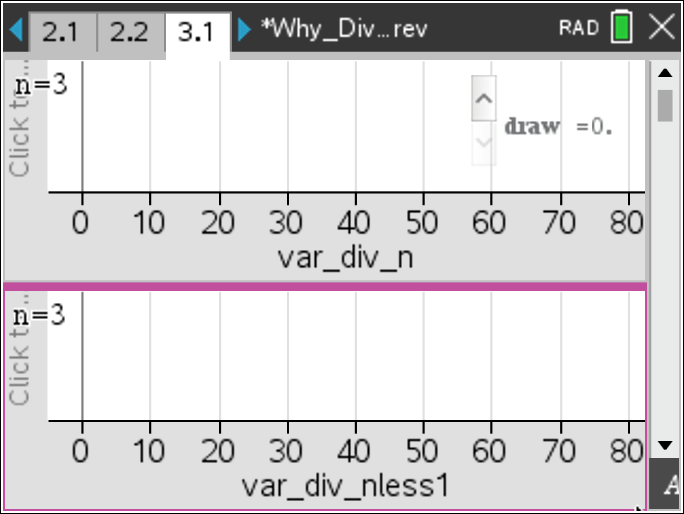Why Divide by n-1?

TI-Nspire™ CX CAS
Why Divide by n-1?
Students will investigate calculating a sample variance using both n and n-1 as the divisor for samples drawn with and without replacement.
- Students will recognize that the mean of all the sample variances for samples of a given size drawn with replacement calculated using n-1 as a divisor will give the population variance calculated using n as a divisor.
- Students will recognize that the mean of all the sample variances for samples of a given size drawn without replacement calculated using n-1 as a divisor will give a value equal to the population variance if calculated using n-1 as a divisor.
- Students will recognize that as the sample size increases the difference in calculating the variances for a sample using n and n-1 as a divisor will decrease.
- Students will recognize that when a sample variance is calculated using n-1 as a divisor, the sample variance produces an unbiased estimator of the population variance.
• bias
• mean
• parameter
• population
• sample size
• sampling distribution
• standard deviation
• variance
This lesson involves investigating calculating a sample variance using both n and n-1 as the divisor for samples drawn with and without replacement.
As a results, students will:
- Investigate the sampling distribution of the variances of all possible samples of size three, drawn with and without replacement from a given population, using as divisors both n and n-1.
- Compare the means of these distributions to the variance for the population.
- Investigate the impact of sample size on the variance calculated using each of the divisors.
TI-Nspire™ CX CAS
Vernier EasyData,Vernier EasyLink and Vernier EasyTemp are registered trademarks of Vernier Science Education.

